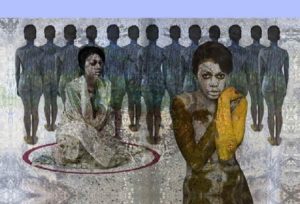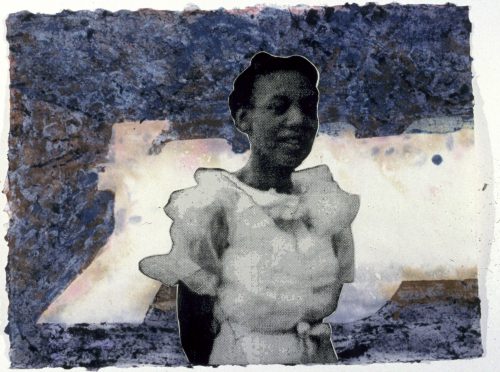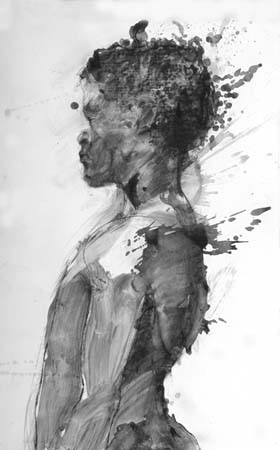
Michael B. Platt
Circle of Grace, 2010
About:
Michael B. Platt was born in Washington, DC, in 1948. In 1970, he received the BFA from the Columbus College of Art and Design, Columbus, Ohio, and the MFA from Howard University in 1973. Rutgers University in New Brunswick, Hartford University of Connecticut, and the Corcoran School of Art in DC are some of the institutions where he has continued his studies in various areas of visual arts. He has exhibited his work in solo and group shows in museums and galleries in Australia, Viet Nam, Ukraine, Greece, Slovenia, the United Kingdom, Italy, and France, as well as throughout the United States. His solo exhibitions include: Ritual +Time Travel = Rebirth: Images and Words by Michael B. Platt and Carol A. Beane at the Sonya Haynes Stone Center of the University of North Carolina, Charlotte (2015); Michael B. Platt: Telling Stories, Framing Time, Australia (2012); and Spirits and Spaces: The Prints of Michael B. Platt, The Harvey B. Gantt Center for African American Arts + Culture, Charlotte, NC (2010). He has also collaborated with other artists—for example, with Renee Stout, Katherine Mann, and poet Carol A. Beane, his wife.

Land Grab, 2014.
In l994, when I first conducted and recorded an interview with Michael Platt for publication (Callaloo 17.4), he described himself as a painter and a printmaker. I began our interview with a question about the difference between painting and printmaking and how he navigates between “the two mediums.” He told me that Printmaking is basically mark-making. Printmaking is a natural extension of drawing. My ace in the hole will always be drawing. Printmaking, especially etching, feels natural. Painting is so plastic: I mean you are not making marks, yet you are making marks because you’re dealing with this thing called the brush. Color is a lot more important in painting. But color is so elusive; it’s there one minute and it’s gone the next. To make a mark on a piece of paper and to have a mark represent something, to make a mark that will remind people of something, to make a mark that will all of a sudden turn into something—these things will always be very important with me.
![]()

Olga.
For a long period of time, I was afraid of painting because I had to work in color. The first images I painted were with muted colors, almost “dirty colors.” And I painted very thin layers so I could use drawing techniques. The last set of paintings I did started out to be technical exercises in terms of the colors I chose. But I still stuck to the same content that I usually work with. Painting also allows me to work in life size, human scale. It’s difficult for me to do that in printmaking. Drawing also allows me to work human scale. By human scale, I mean four feet by six feet. Painting has this extra magic of color. It can be very [End Page 844] immediate. It can be very, very labored. But prints are not planning with colors. I just like the immediacy of the mark in printing with black and white. But painting allows me to explore some other elements of…( Charles H. Rowell on Project Muse)
![]()

